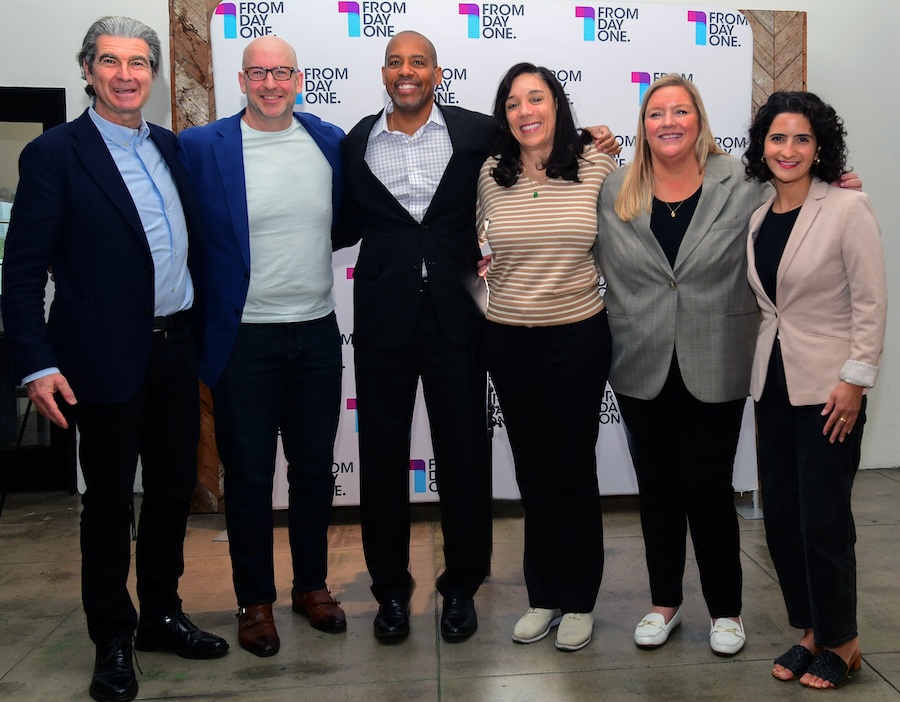How Employers Are Boosting Internal Mobility and Career Development
Developing talent from within a company’s ranks simply makes a lot of sense. The benefits include greater productivity because employees are motivated to reach their goals, cost savings and time savings from the job search and onboarding processes, and increased employee satisfaction as workers feel they are valued.But as with all corporate practices, how a company puts an idea into practice makes a difference. At From Day One’s Manhattan conference, a panel of leaders spoke to the topic, “Creating Opportunity Within: How Employers Are Boosting Talent and Career Development,” sharing the thoughtful and effective ways their organizations are successfully promoting employees.The executive panel discussion featured five dynamic and creative business leaders who described their own career development and the ways they support and encourage the same for others.At Visa, the message that career development is a priority comes from the very top, says Melissa Fridman, head of people and global merchant sales & acquiring at Visa, North America. Ryan McInerney ascended to CEO in February 2023, after being prepared for this transition for two years, Fridman says. And among his first actions as chief executive was to promote others into leadership roles, which reinforced the message throughout the company that there was career mobility.Fridman described the company’s efforts as driven from the top down and intentional, and relayed how as a new CEO, McInerney blocked off a few days this year with his leadership team to discuss talent across the company. “And everybody knows that, so in advance all the businesses are spending time with their HR partners and their leadership teams talking about talent. That type of intention and knowing that we’re being deliberate about succession planning because of the robustness of those conversations, [leads to a lot of] follow up action.”But a bottom-up strategy also works. Penguin Random House adopted a growth charter a decade ago that “infiltrated through our personal development conversations and put the power back in the hands of the employee,” said Joanne Mallia-Barsati, vice president of global talent management and development. This growth and development methodology was designed to create two-way coaching conversations between a manager and employee to elicit “how people really think about their careers, how they own their careers and how they are equally responsible in thinking about their development at the company,” Mallia-Barsati said.Brent Vader, VP of HR at Verizon recognized that at a company with a large frontline employee population, internal mobility and career development might look different than at other organizations. “It was very difficult to figure out how to make the right connections, you don’t just want to post and pray and hope that someone recognizes my profile. There has to be something more deliberate,” said Vader.And so over the course of a few years, Verizon created a program called Journey Forward to map out how ambitious frontline workers can get ahead. “It encompasses everything that we’ve talked about, whether it's finding a network, making sure you have a sponsor, and understanding the right skills and experiences necessary to qualify you for that next role,” he said.The panelists spoke about the topic "Creating Opportunity Within: How Employers Are Boosting Talent and Career Development," in a session moderated by journalist Jeanhee Kim The point of the Journey Forward is to give employees a systematic approach for their development plan, as well as a plan for getting training and finding a mentor, to make it easier to scale to their next opportunity.This effort to develop talent from within is a shift from the more traditional practice of attracting new talent to companies. A tell-tale sign that a company is serious about career development is when its internal career page is as sophisticated and thoughtfully designed as its external one, said Marcus Strang, lead solutions engineer of recruitment marketing platform Clinch.“We’ve started to see a shift in the market. Companies are realizing that there’s a much better ROI in investing in internal resources like career portals, talent networks programs, where employees who already work for you can get excited about their next job with you, instead of thinking they have to leave in order to grow.”The cost-benefit analysis points in favor of career development. “If you invest so much in an employee, and then they go elsewhere, and they take all the learning and all of the investment that you've made and bring it to another company, that’s really a big-time loss,” said Rose Fass, founder and chair of leadership development consulting company FassForward.Additionally, retained employees attract talent to your company: “They’re really your best advertisement, aren’t they?” said Fass.Mallia-Barsati says Penguin’s global immersion program, which adds a global dimension to its career development efforts, has created new business opportunities as well. Spending time in a new location allows the employee to get to know the team, understand the business, build connections, and really understand the culture, she says. From this program, they’ve experienced numerous business achievements, “including new imprints created, book partnerships and acquisitions,” she said.Jeanhee Kim is an independent journalist who has worked for CoinDesk, Crain’s New York Business, Money magazine and Forbes Asia.





